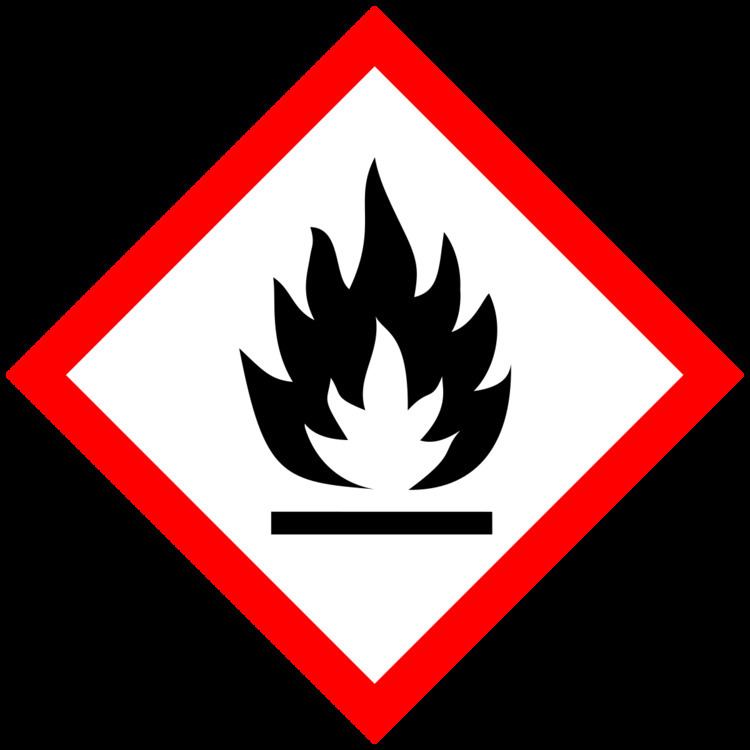 | ||
Generally, a flammable liquid is a combustible liquid that can easily catch fire. However, it is not the liquid itself that burns, but the vapor cloud above the liquid that will burn if the vapor's concentration in air is between the lower flammable limit (LFL) and upper flammable limit (UFL) of the liquid.
Definitions
A number of attempts have been made to standardise the definition of 'flammable' based on the need to classify such fluids as presenting a higher risk of ignition and therefore needing additional precautions.
In the US, a flammable liquid is defined as one with a flash point below 100 degrees Fahrenheit (38 degrees Celsius). This definition is part of a categorisation of combustible liquids used by the National Fire Protection Association, The US Department of Transportation, the US Environmental Protection Agency, the US Occupational Safety and Health Administration and others.
These categories are further subdivided, depending on the liquid's flash point and boiling point.
